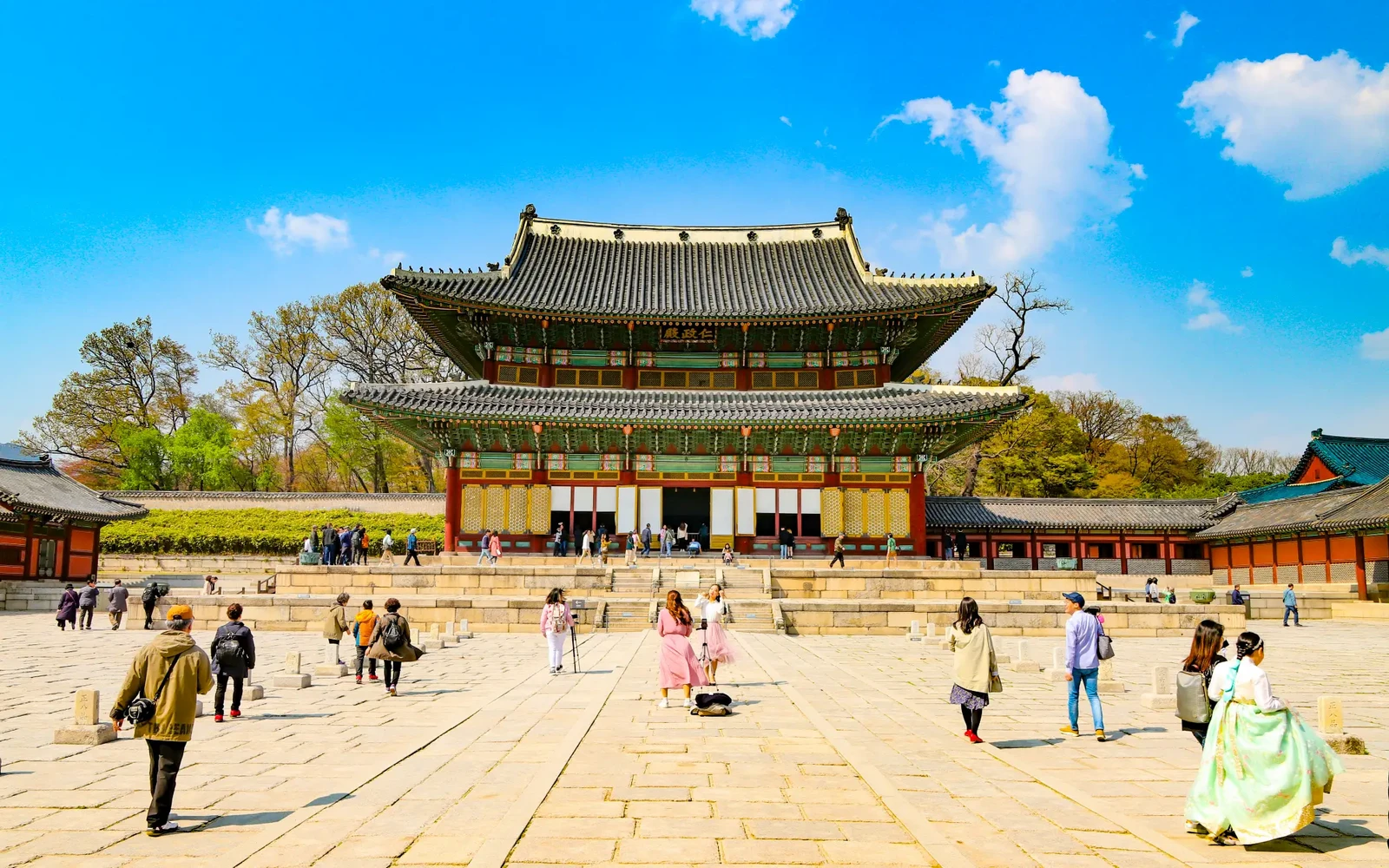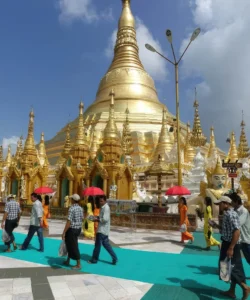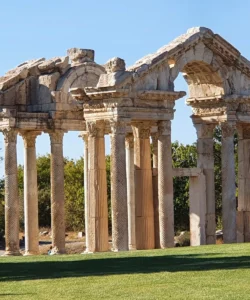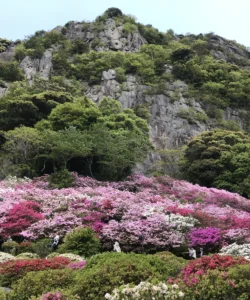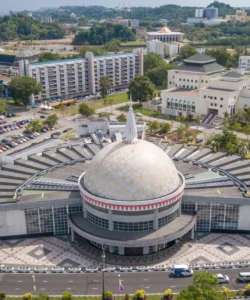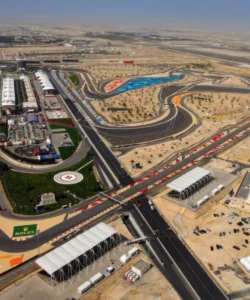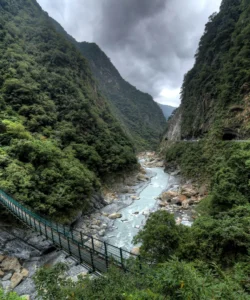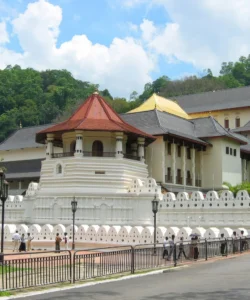Changdeokgung Palace, meaning “Prospering Virtue Palace,” is one of the “Five Grand Palaces” of the Joseon Dynasty in Seoul, South Korea. Unlike the more formal and symmetrical layout of Gyeongbokgung, Changdeokgung was built to harmonize more naturally with the surrounding terrain, following the contours of Bugaksan Mountain. This unique design philosophy, combined with its long history as a favored royal residence, earned it a prestigious spot as a UNESCO World Heritage site. It is particularly famous for its stunning Secret Garden (Huwon), a masterpiece of Korean landscape design.
Listen to an introduction about Changdeokgung Palace
![]()
Name: Changdeokgung Palace (창덕궁; 昌德宮)
Address: 99 Yulgok-ro, Jongno-gu, Seoul, South Korea.
How to get there:
Changdeokgung Palace is centrally located in Seoul and easily accessible:
- By Subway:
- Anguk Station (Seoul Subway Line 3, Exit 3): This is the closest and most convenient exit. From here, it’s a short 5-minute walk straight ahead.
- Jongno 3-ga Station (Seoul Subway Line 1, 3, or 5, Exit 6): About a 10-minute walk towards the palace.
- By Bus: Numerous bus routes pass near Changdeokgung Palace.
- By Taxi/Ride-Sharing Services: Taxis are readily available throughout Seoul and offer a direct way to reach the palace entrance.
- Walking: Its proximity to Bukchon Hanok Village, Gyeongbokgung Palace, and Insadong makes it ideal for combining visits on foot.
Landscape and Architecture:
Changdeokgung Palace’s architecture is renowned for its organic integration with nature, emphasizing natural beauty over rigid formality:
- Organic Layout (vs. Gyeongbokgung’s Symmetry): Unlike the more rigid, symmetrical layout of Gyeongbokgung, Changdeokgung’s buildings are arranged more freely and organically, adapting to the natural slopes and undulations of the terrain. This “architecture-as-part-of-nature” approach is a defining characteristic.
- Donhwamun Gate: The main gate to the palace, it is the oldest surviving palace gate in Seoul, dating back to 1412. Its two-story, unadorned structure exudes a venerable dignity.
- Injeongjeon Hall: The throne hall, used for major state events like coronations and receiving foreign envoys. It’s an imposing, two-story building with a wide courtyard.
- Seonjeongjeon Hall: The king’s office where he conducted daily affairs, notable for its blue-tiled roof, a rare feature in Korean architecture of the time.
- Huijeongdang Hall: Once the king’s private chambers, later used as an executive office, it exhibits a fascinating blend of traditional Korean design with later Western influences (such as electric lights and a car ramp installed in the early 20th century).
- Daejojeon Hall: The queen’s official residence and where royal weddings and funerals took place. It lacks a ridge roof, reflecting a common feature of residential buildings.
- Buyongjeong Pavilion & Juhamnu Pavilion: These elegant structures are found within the Secret Garden, beautifully integrated with the surrounding ponds and trees, perfect for contemplation and scholarly pursuits.
- Dancheong Colors: Like other Korean palaces, the wooden structures are adorned with vibrant Dancheong, traditional polychrome patterns, although perhaps with a slightly softer palette than Gyeongbokgung.
- Huwon (Secret Garden): The jewel of Changdeokgung. This vast, exquisitely landscaped rear garden (also known as Biwon or Geumwon) covers over 30 hectares, representing about 60% of the entire palace grounds. It features natural valleys, dense forests, winding pathways, tranquil ponds, and elegant pavilions designed for royal relaxation, contemplation, and scholarly pursuits. Its preservation as a natural landscape, rather than a formal garden, is a key aspect of its design.
What makes it famous:
Changdeokgung Palace is famous for:
- UNESCO World Heritage Site: Recognized in 1997 for its outstanding example of Far Eastern palace architecture and garden design, which is exceptional in its integration with the landscape.
- Royal Residence for Centuries: It was the most favored palace of many Joseon kings and served as the main royal residence for a significant portion of the dynasty’s history (over 270 years), particularly after Gyeongbokgung’s destruction in 1592.
- The Secret Garden (Huwon): This is its biggest draw. Widely considered one of the finest examples of Korean traditional landscape gardening, it’s a place of immense beauty and tranquility, designed to blend seamlessly with nature. Access is typically by guided tour only, preserving its serene atmosphere.
- Architectural Harmony with Nature: Its unique design approach, emphasizing harmony with the natural terrain rather than rigid symmetry, sets it apart from many other grand palaces worldwide.
- Survival and Authenticity: Compared to Gyeongbokgung, which suffered near-total destruction and extensive reconstruction, Changdeokgung has a higher proportion of its original structures remaining, giving it a more authentic historical feel.
- Last Royal Residence: Members of the Korean imperial family lived here until 1989.
Differences from some other wonders:
Changdeokgung Palace holds distinct characteristics that differentiate it from other royal palaces and historical sites, particularly Gyeongbokgung:
- Organic Layout and Harmony with Terrain: Its most significant difference from Gyeongbokgung is its unconventional, organic layout that adapts to the natural topography of the surrounding hills, rather than following a strict axial, symmetrical design. This makes it feel more integrated with nature and less imposing, reflecting a different design philosophy.
- The Secret Garden (Huwon): While many palaces have gardens, Changdeokgung’s Huwon is exceptional in its vastness (60% of the palace grounds) and its design as a natural landscape garden rather than a formally manicured one. Its limited, guided access also contributes to its mystique and preservation. This contrasts with more open, accessible gardens found in other palaces.
- Higher Proportion of Original Structures: Having been the primary palace for a longer period and having suffered less complete destruction than Gyeongbokgung (especially after the Japanese invasions), Changdeokgung retains a greater number of its original 15th-century structures, offering a deeper sense of historical authenticity.
- Focus on Residential and Everyday Life: While it has a throne hall, Changdeokgung often feels more like a royal residence and retreat due to the emphasis on its living quarters, study areas, and the sprawling Secret Garden, as opposed to the more governmental and ceremonial feel of Gyeongbokgung.
- UNESCO Recognition for Design Philosophy: Its UNESCO World Heritage status explicitly highlights its innovative architectural philosophy of integrating built structures into the natural landscape, rather than simply for its historical importance or scale.
In essence, Changdeokgung Palace is a masterpiece of Korean royal architecture and landscape design, offering a tranquil and historically rich journey into a unique blend of human creation and natural beauty, making it a truly exceptional wonder.
